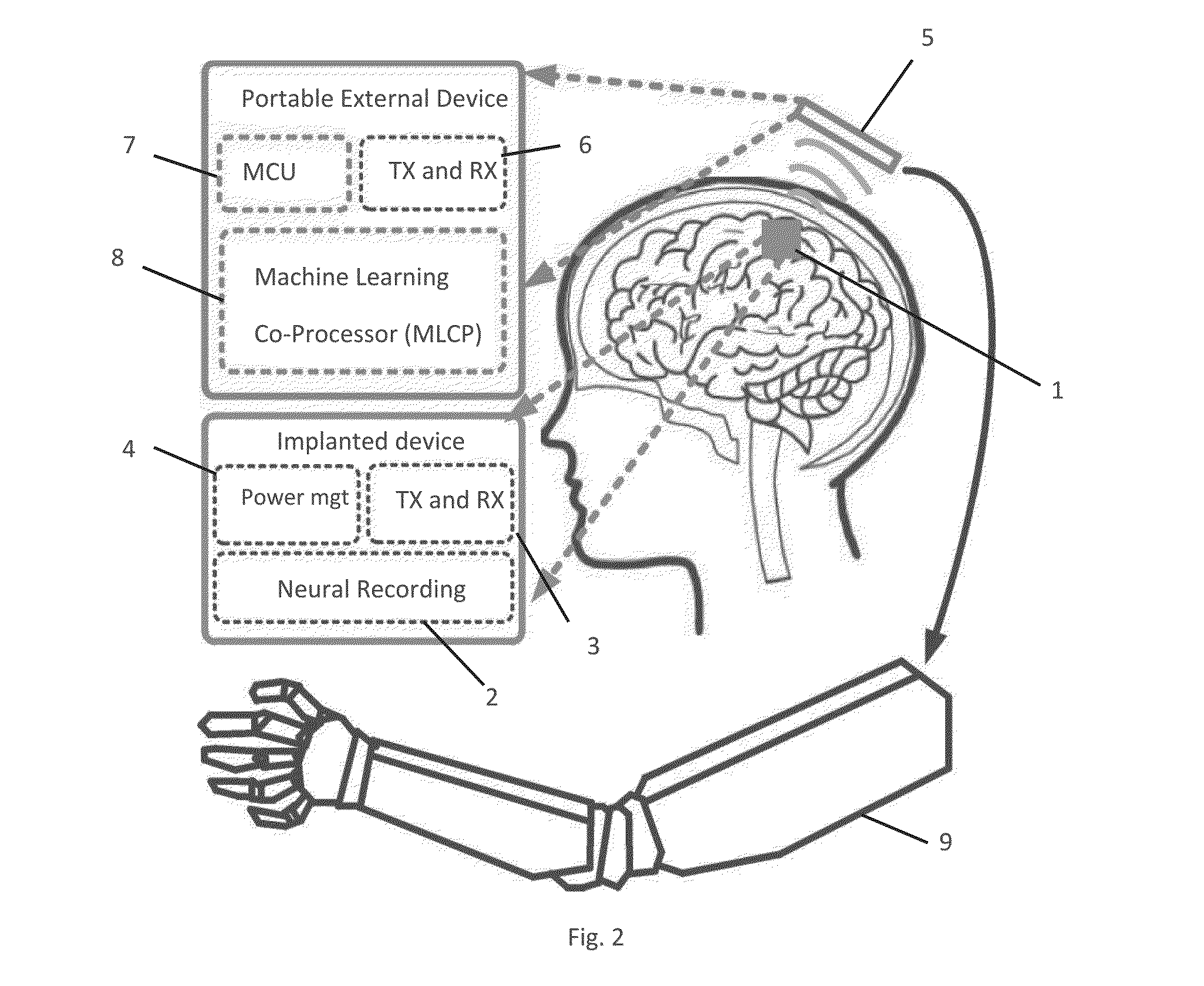Systems and methods for classifying electrical signals
a technology of electrical signals and classification methods, applied in the field of system and method classification of electrical signals, can solve the problems of system power consumption as much as hundreds of milli-watts for some applications, and achieve the effects of reducing power consumption, similar or better performance, and speeding up speed
- Summary
- Abstract
- Description
- Claims
- Application Information
AI Technical Summary
Benefits of technology
Problems solved by technology
Method used
Image
Examples
first embodiment
[0048]Referring to FIG. 2, the invention is illustrated. A micro-electrode array (MEA) 1 has been implanted into the brain of a subject. The MEA includes: a unit 2 comprising electrodes for recording of neural signals; a transmitting / receiving (TX / RX) unit 3 for transmitting the neural recordings out of the subject (and optionally receiving control signals and / or power); and a power management unit 4 for controlling the units 2, 3.
[0049]The subject also wears a portable external device (PED) 5 comprising: a TX / RX unit 6 for receiving the neural recordings from the unit 3 of the MEA 1; a microcontroller unit (MCU) 7 for pre-processing them, and a machine learning co-processor (MLCP) 8 for processing them as described below. The control output of the MLCP 8 is transmitted by the unit 6 to control a prosthesis 9.
second embodiment
[0050]In the invention, the MLCP 8 is located not in the PED 5 but in the implanted MEA 1 This dramatically reduces the data which the unit 3 has to transmit out of the subject, and thus dramatically reduces the power which has to be provided by the power management unit 4. As described below, certain embodiments of the invention are integrated circuits which are suitable for use as the MLCP in such a scenario.
[0051]Turning to FIG. 3, a network architecture is shown of a two-layer neural network which can be used by the MLCP 8, in an adaptive model known as the ELM algorithm. The network includes d input neurons with associated values x1, x2, . . . , xd, which can also be denoted as a vector x with d components. Thus, d is the dimension of the input to the network.
[0052]The outputs of these d input neurons are input to a hidden layer of L hidden neurons having an activation function g: R→R. [4] Without loss of generality, we consider a scalar output in this case. The output o of the...
PUM
 Login to view more
Login to view more Abstract
Description
Claims
Application Information
 Login to view more
Login to view more - R&D Engineer
- R&D Manager
- IP Professional
- Industry Leading Data Capabilities
- Powerful AI technology
- Patent DNA Extraction
Browse by: Latest US Patents, China's latest patents, Technical Efficacy Thesaurus, Application Domain, Technology Topic.
© 2024 PatSnap. All rights reserved.Legal|Privacy policy|Modern Slavery Act Transparency Statement|Sitemap



